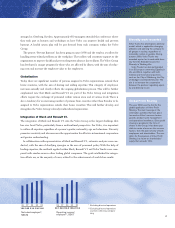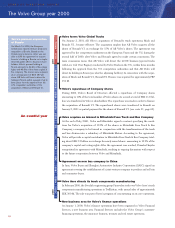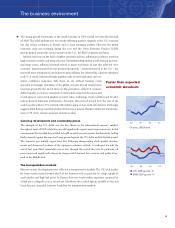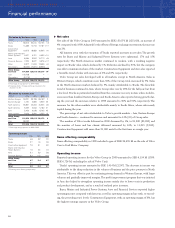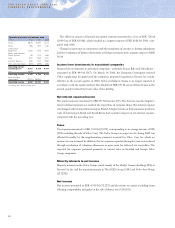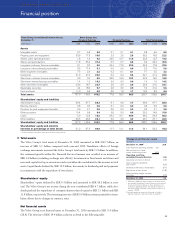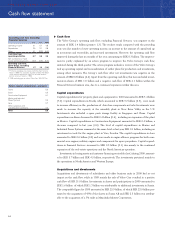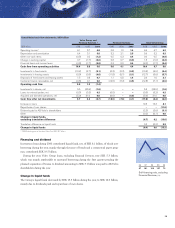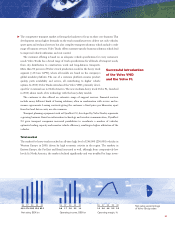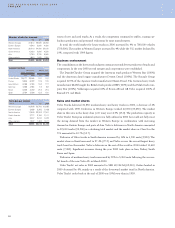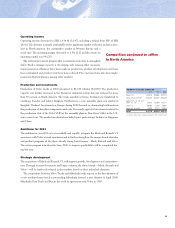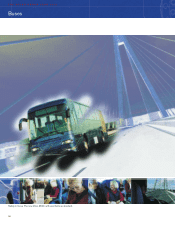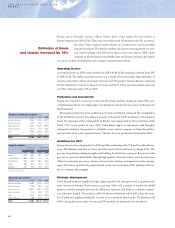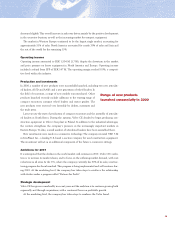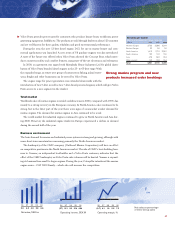Volvo 2000 Annual Report Download - page 29
Download and view the complete annual report
Please find page 29 of the 2000 Volvo annual report below. You can navigate through the pages in the report by either clicking on the pages listed below, or by using the keyword search tool below to find specific information within the annual report.
27
The competitive transport market is forcing the hauliers to focus on their core business. This
development means higher demands on the truck manufacturers to deliver not only vehicles,
spare parts and technical services but also complete transport solutions, which include a wide
range of business services. Volvo Trucks offers customer-specific business solutions, which lead
to improved vehicle utilization and cost control.
The customer offering is based on an adequate vehicle specification for every customer’s
needs. Volvo Trucks has a broad range of truck specifications for all kinds of transport needs,
from city distribution to construction work and long-distance transports.
More than 90 percent of Volvo’s truck production is sold in the heavy truck
segment (>16 tons GVW), where all models are based on the company’s
global modular platform. The use of a common platform ensures product
quality, parts availability and service, all contributing to higher vehicle
uptime. In 2000, Volvo Trucks introduced the Volvo VHD, primarily devel-
oped for vocational use in North America. The new medium-heavy truck Volvo FL, launched
in 2000, shares much of its technology with the heavy-duty models.
The customer is also offered an extensive range of support services. Financial services
include many different kinds of leasing solutions, often in combination with service and in-
surance agreements. Leasing contracts giving the customer a fixed price per kilometer, apart
from fuel and driver costs, are also common.
Transport planning equipment such as Dynafleet 2.0, developed by Volvo Trucks, represents
a growing business. Based on information technology and wireless communication, Dynafleet
2.0 gives transport companies increased possibilities to coordinate a number of vehicles,
optimize loading capacity and monitor vehicle efficiency, resulting in higher utilization of the
vehicles.
Total market
The market for heavy trucks reached an all-time high level of 246,000 (236,000) vehicles in
Western Europe in 2000, driven by high economic activity in the region. The markets in
Eastern Europe, the Far East and Brazil increased as well, although from comparatively low
levels. In North America, the market declined significantly and was troubled by large inven-
96 97 98 99 00
Net sales, SEK bn
40.3 47.4 58.5 63.0 62.2
96 97 98 99 00
Operating margin, %
1.9 3.6 4.8 5.2 2.3
Net sales as percentage
of Volvo Group sales
48 %
96 97 98 99 00
Operating income, SEK bn
0.8 1.7 2.8 3.2 1.4
▲
Successful introduction
of the Volvo VHD
and the Volvo FL


